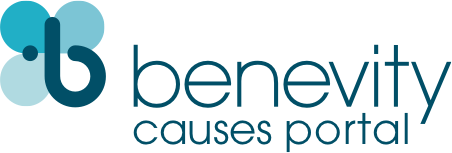The Jewish Museum
This organization has already been registered
Someone in your organization has already registered and setup an account. would you like to join their team?Profile owner : j**********p@jm.o*g
Mission Statement
Located on New York City’s Museum Mile, the Jewish Museum is a jewel-box of an art museum, and a distinctive hub for art and Jewish culture for people of all backgrounds. The Museum maintains a unique collection of nearly 30,000 works of fine art, Judaica, antiquities, folk art, ceremonial objects, and broadcast media which reflect the global Jewish experience over more than 4,000 years. Our distinguished exhibition history reveals a deep and rich exploration of Jewish culture and identity, and includes some of the most seminal shows of the 20th and 21st centuries. Our dynamic education programs – from talks and lectures, to performances, to hands-on art making and more – serve a wide range of audiences, including families, students, educators, and art lovers.
About This Cause
The Jewish Museum, one of the world’s preeminent institutions devoted to exploring art and Jewish culture, from ancient to contemporary, was founded in 1904 in the library of The Jewish Theological Seminary, where it was housed for more than four decades. The Jewish Museum was the first institution of its kind in the United States and is the oldest existing Jewish museum in the world. Judge Mayer Sulzberger1 donated the first gift of 26 objects of fine and ceremonial art to the library of The Jewish Theological Seminary with the suggestion that a Jewish museum be formed. Subsequent gifts and purchases have helped to form the Museum’s distinguished permanent collection, one of the largest and most important of its kind in the world. In 1944, Frieda Schiff Warburg2, widow of the prominent businessman and philanthropist Felix Warburg3, who had been a Seminary trustee, donated the family mansion4 at 1109 Fifth Avenue at 92nd Street to the Seminary for use as a museum. Located along New York City's Museum Mile, and designed in the French Gothic chateau-style by architect Charles P.H. Gilbert, the original building was completed in 1908, and has been the home of the Museum since 1947. A sculpture court was installed alongside the Mansion in 1959, and the Albert A. List Building was added in 1963 to provide additional exhibition and program space. In 1989, a major expansion and renovation project was undertaken; upon completion in June 1993, the expansion doubled the Museum’s gallery space, created new space for educational programs, provided significant improvements in public amenities, and added a two-floor permanent collection exhibition called Culture and Continuity: The Jewish Journey, which tells the unfolding story of Jewish culture and identity through 800 works of art. Today, the Jewish Museum presents a diverse schedule of internationally acclaimed temporary exhibitions while maintaining a collection of nearly 30,000 objects reflecting global Jewish identity – paintings, sculpture, works on paper, photographs, ethnographic material, archaeological artifacts, numismatics, ceremonial objects, and broadcast media. The Jewish Museum’s programming includes large temporary exhibitions of an interdisciplinary nature, often employing a combination of art and artifacts interpreted through the lens of social history. The Dreyfus Affair: Art, Truth and Justice (1987)5, Gardens and Ghettos: The Art of Jewish Life in Italy (1989), Bridges and Boundaries: African Americans and American Jews (1992), From Court Jews to the Rothschilds: Art, Patronage and Power 1600 – 1800 (1996), Berlin Metropolis: Jews and the New Culture 1890 – 1918 (1999), The Power of Conversation: Jewish Women and Their Salons (2005), and The Radical Camera: New York’s Photo League, 1936 – 1951 (2011) are examples of this type of exhibition. The Museum is also known for monograph shows of significant artists such as Camille Pissarro (1995), Marc Chagall (2013, 2001, and 1996), Chaim Soutine (1998), George Segal (1998), Adolph Gottlieb (2002), Amedeo Modigliani (2004), Eva Hesse (2006), Alex Katz (2006), Louise Nevelson (2007), Man Ray (2009), Maira Kalman (2011), Edouard Vuillard (2012), Jack Goldstein (2013), Art Spiegelman (2013), and Mel Bochner (2014). Works of modern and contemporary artists are regularly presented in group exhibitions such as Too Jewish? Challenging Traditional Identities (1996), Action/Abstraction: Pollock, de Kooning, and American Art, 1940 – 1976 (2008), and Other Primary Structures (2014). The Museum regularly presents a diverse and wide-ranging array of daytime and evening programs for individuals, groups, families, and schools. For more than a century, the Jewish Museum has illuminated art and Jewish culture from biblical times to the present, offering intellectually engaging and educational exhibitions and programs for people of all ages and backgrounds. Together with its unparalleled collection, the Museum provides an ever-changing and dynamic range of opportunities for exploring multiple facets of the Jewish experience, and for educating current and future generations.
